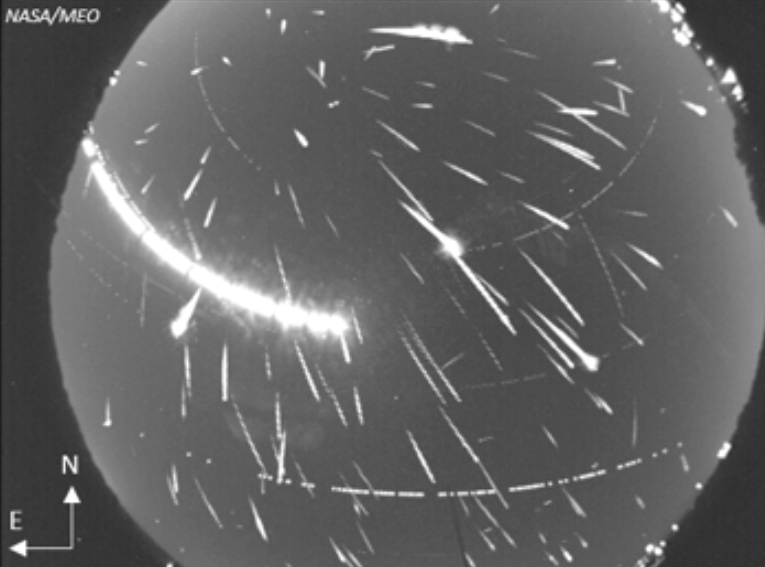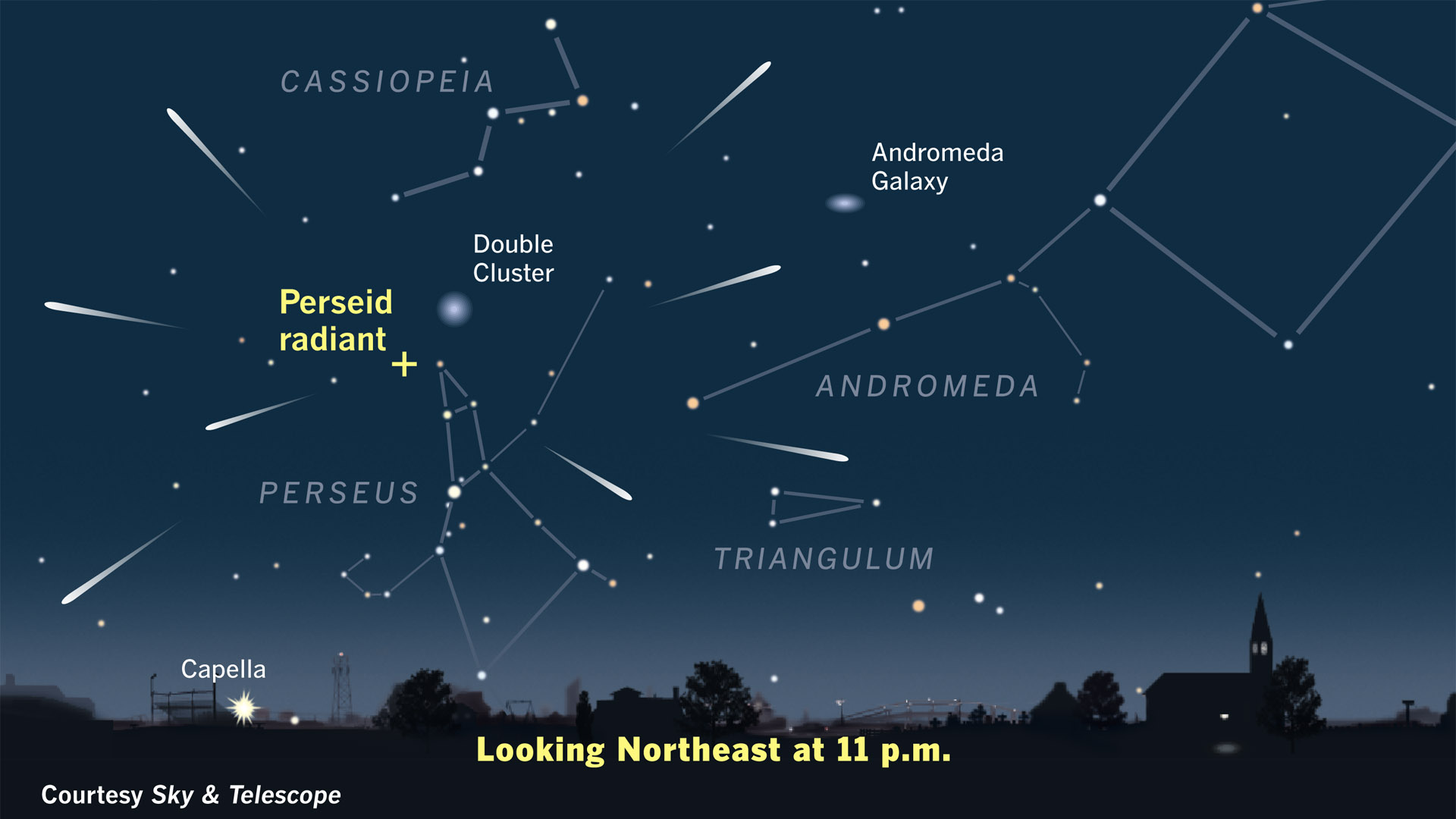Perseid Meteor Shower 2018 Peaks Tonight! How to Watch Online
Update for Aug. 13: The 2018 Perseid meteor shower peaked over the weekend, dazzling the skywatchers that saw it. See our wrap story here: Perseid Meteor Show Wows Skywatchers with Celestial Fireworks
The summer's best meteor shower – the Perseids – peaks overnight tonight (Aug. 12), but you'll need good weather to see it. If your night sky is cloudy or hazy, you can check out the annual meteor shower on webcasts online by Slooh, NASA and the Virtual Telescope Project.
You can watch the Perseid meteor shower webcast here, courtesy of the astronomy broadcast service Slooh. The 6-hour webcast begins at 5 p.m. EDT (2100 GMT), and you can watch it directly on Slooh.com. During the broadcast, viewers can use the hashtag #Slooh on social media to share Perseids photos, or to ask questions of the experts and astronomers on the show.
"The Perseids are my favorite meteor shower, and they'll be the best shower of the year, with high rates of meteors streaking across the sky and no moonlight to spoil the view," Slooh astronomer Paul Cox said in a statement. "If viewers of our live coverage are lucky enough to have clear skies themselves, they should use Slooh's commentary as their meteor watching soundtrack." [Perseid Meteor Shower 2018: When, Where & How to See It]

NASA will also host a live Perseids webcast tonight using video from its all-sky cameras at the Marshall Space Flight Center in Huntsville, Alabama. The webcast will stream live on the NASA Meteor Watch Facebook page. It will begin at about 9 p.m. EDT (0100 GMT on Aug. 13) and continue through the predawn hours of Monday.
"The Perseids are best seen between about 2 a.m. your local time and dawn," NASA officials with the Marshall Space Flight Center Meteoroid Environment Office said in an advisory. "If those hours seem daunting, not to worry! You can go out after dark, around 9 p.m. local time, and see Perseids. Just know that you won't see nearly as many as you would had you gone out during the early morning hours."

You can also check out the Perseids courtesy of the Virtual Telescope project. Astrophysicist Gianluca Masi will start the broadcast live on Aug. 12 at 4:30 p.m. EDT (2030 GMT).
Get the Space.com Newsletter
Breaking space news, the latest updates on rocket launches, skywatching events and more!
"This year, because of the excellent sky conditions ... we will be broadcasting our live feed from [Italy's] Castel Santa Maria, where the local community is working on a very important project to restore the local, XVI [16th] century church, of huge historic and artistic value [that was] damaged by several earthquakes," Masi said in a statement.
The Perseid meteor shower occurs when Earth passes through the path of Comet Swift-Tuttle, running into the stream of debris that the comet leaves behind. The meteors appear to emanate from the northern constellation Perseus. Technically speaking, the 2018 Perseids run from July 17 to Aug. 24, but the peak is expected on Sunday (Aug. 12). Skywatchers also have a new moon in the sky, so there won't be much moonlight washing out the faint stars.
Editor's note: If you snap an awesome photo of the Perseid meteor shower that you'd like to share with Space.com and our news partners for a potential story or gallery, send images and comments to spacephotos@space.com.
Follow us @Spacedotcom, Facebook and Google+. Original article on Space.com.
Join our Space Forums to keep talking space on the latest missions, night sky and more! And if you have a news tip, correction or comment, let us know at: community@space.com.

Elizabeth Howell (she/her), Ph.D., was a staff writer in the spaceflight channel between 2022 and 2024 specializing in Canadian space news. She was contributing writer for Space.com for 10 years from 2012 to 2024. Elizabeth's reporting includes multiple exclusives with the White House, leading world coverage about a lost-and-found space tomato on the International Space Station, witnessing five human spaceflight launches on two continents, flying parabolic, working inside a spacesuit, and participating in a simulated Mars mission. Her latest book, "Why Am I Taller?" (ECW Press, 2022) is co-written with astronaut Dave Williams.









